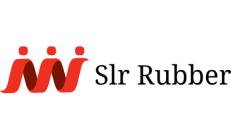Factory Overview:
A rubber seals and gaskets factory is a specialized manufacturing facility dedicated to the production of a wide range of rubber-based sealing solutions. These factories play a pivotal role in meeting the demands of diverse industries, including automotive, aerospace, oil and gas, construction, pharmaceuticals, and many others. Such facilities are typically equipped with advanced machinery, skilled labor, and stringent quality control measures to ensure the production of high-quality sealing products.
Production Processes:
- Material Selection: The first step in the production of rubber seals and gaskets is the careful selection of raw materials. This involves choosing the appropriate elastomer or rubber compound based on the specific requirements of the product, including factors like temperature resistance, chemical compatibility, and flexibility.
- Compounding: Raw rubber materials are mixed with various additives, such as curing agents, accelerators, and fillers, in precise proportions. This compounding process ensures that the rubber material attains the desired physical and chemical properties.
- Molding and Extrusion: The rubber compound is then processed through molding or extrusion machines, depending on the type and design of the seal or gasket. Molding involves shaping the rubber into specific forms using molds, while extrusion creates continuous lengths of rubber profiles.
- Curing: After molding or extrusion, the rubber components are cured. This process involves subjecting them to elevated temperatures in specialized ovens or autoclaves. Curing allows the rubber to reach its final hardness and resilience.
- Precision Cutting: Once cured, the rubber is precision-cut into the desired shapes and dimensions using cutting machines or dies. This step ensures that the seals and gaskets meet the exact specifications required for their intended applications.
- Quality Control: Quality control is a continuous process throughout production. Samples are taken at various stages to check for dimensional accuracy, material consistency, and adherence to quality standards. Any deviations are corrected promptly.
- Testing: Finished seals and gaskets undergo rigorous testing to verify their performance characteristics, such as leak resistance, compression set, tensile strength, and chemical resistance. This ensures that the products meet or exceed industry standards.
Key Components and Machinery:
- Rubber Mixing Machines: These machines mix the raw rubber materials with additives to create the rubber compound.
- Molding and Extrusion Equipment: These include presses, molds, and extruders used to shape the rubber into the desired profiles.
- Curing Ovens or Autoclaves: These are specialized chambers where the rubber components are cured at controlled temperatures and pressures.
- Cutting and Trimming Machines: These machines precisely cut the rubber components into their final shapes and dimensions.
- Testing Equipment: Various instruments and apparatuses are used for quality testing, including leak testers, hardness testers, and chemical resistance testing equipment.
Significance and Applications:
Rubber seals and gaskets are integral components in a vast array of applications:
- Automotive Industry: They are used in engines, transmissions, and vehicle chassis to prevent leaks and ensure optimal performance.
- Construction: Seals and gaskets are employed in construction machinery, buildings, and infrastructure projects for waterproofing and weatherproofing.
- Aerospace: In aircraft and spacecraft, they maintain pressure differentials, insulate against extreme temperatures, and ensure the integrity of critical systems.
- Oil and Gas: These industries rely on seals and gaskets for sealing pipelines, valves, and other equipment to prevent leaks and ensure safety.
- Pharmaceuticals: Gaskets are used in pharmaceutical manufacturing equipment to maintain sterility and prevent contamination.
- Electronics: They provide protection against dust, moisture, and electromagnetic interference in electronic devices.
Environmental Considerations:
Rubber seals and gaskets factories should adhere to environmental regulations and adopt eco-friendly practices. This includes managing waste rubber materials responsibly, optimizing energy consumption, and reducing emissions to minimize the factory’s carbon footprint.
In conclusion, a rubber seal and gaskets factory serves as a vital hub for the production of essential sealing solutions that are indispensable in various industries. Its processes, equipment, and commitment to quality control ensure that these sealing products meet the stringent demands of modern engineering and manufacturing, contributing to the reliability and safety of countless applications in our daily lives.





